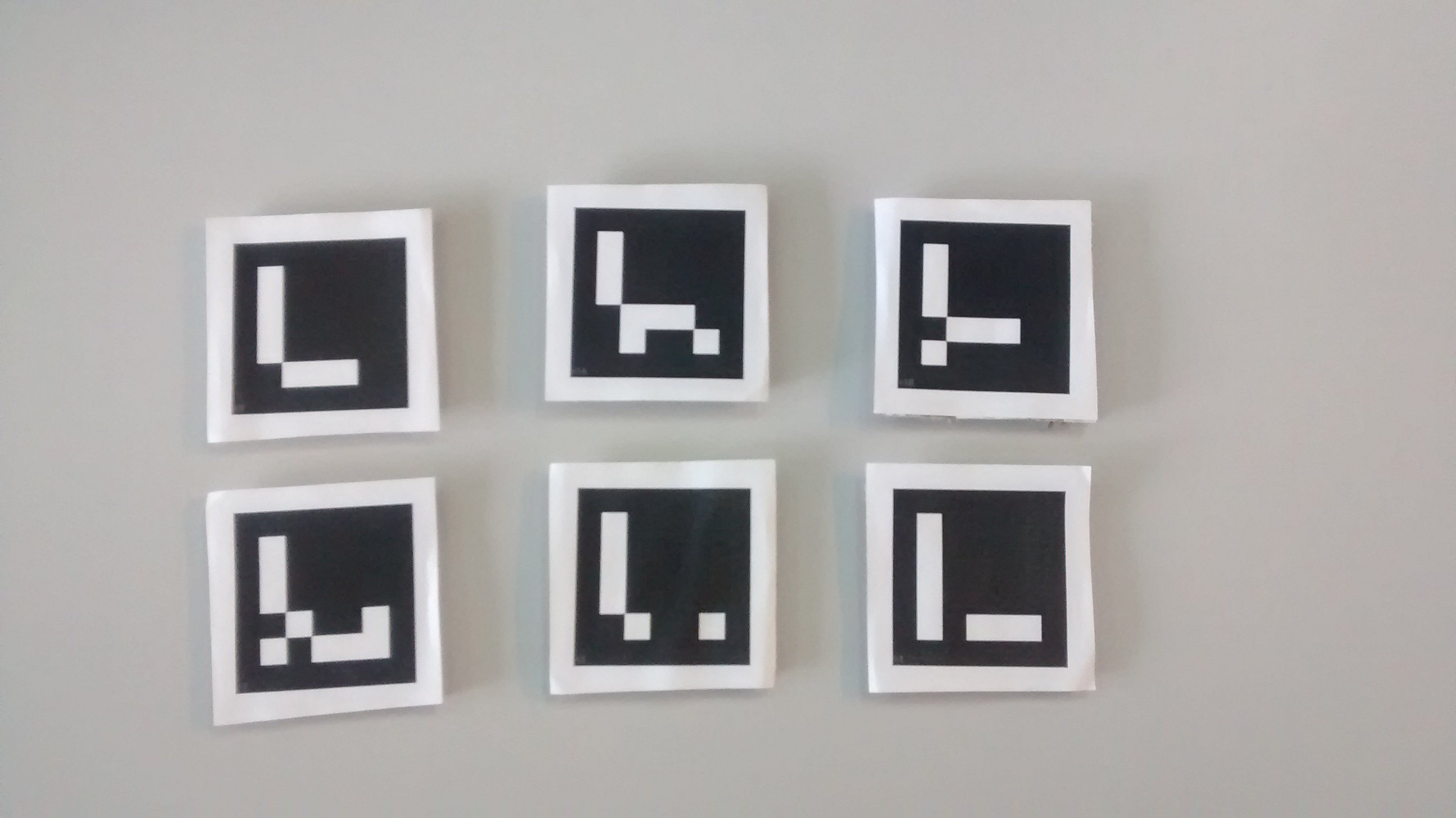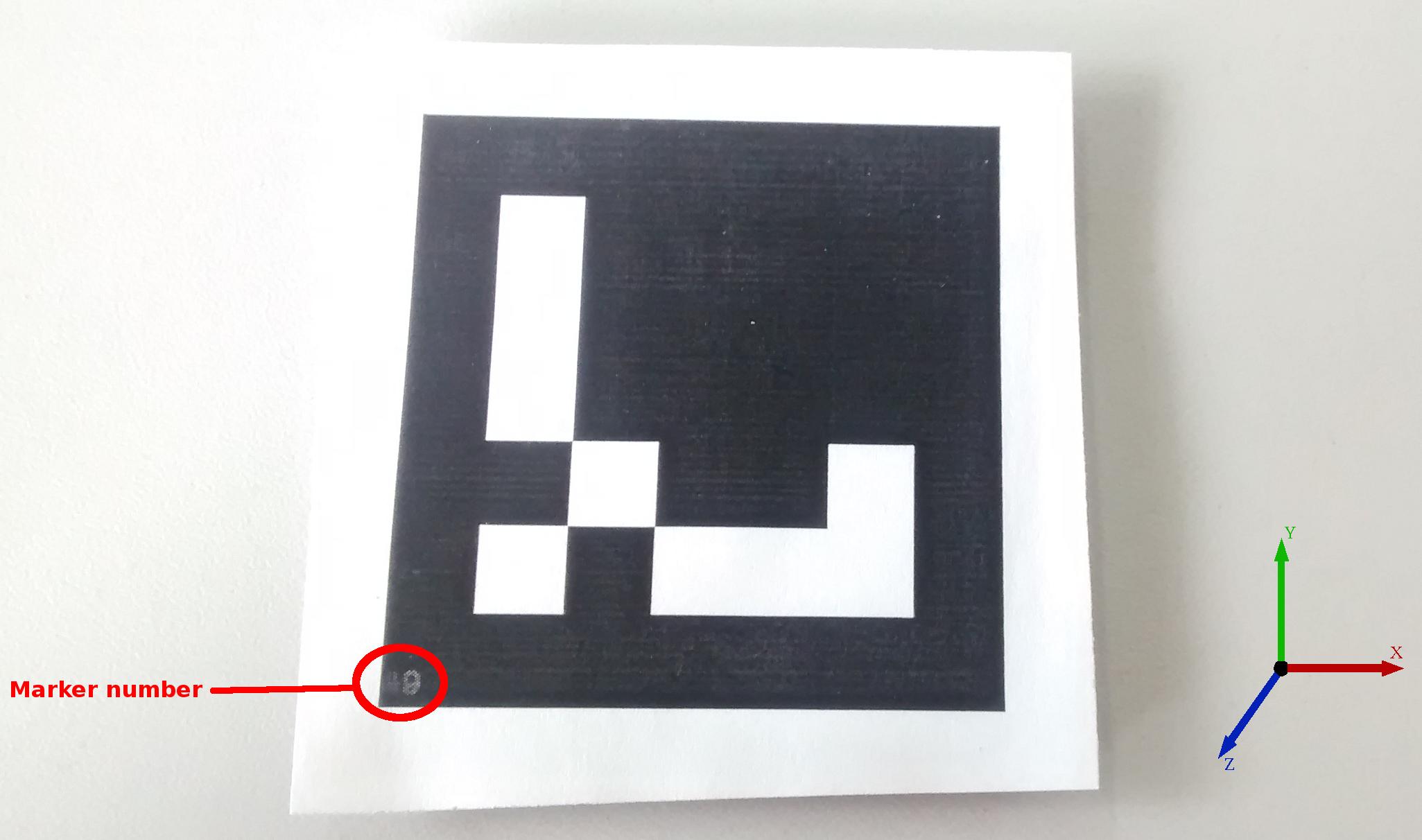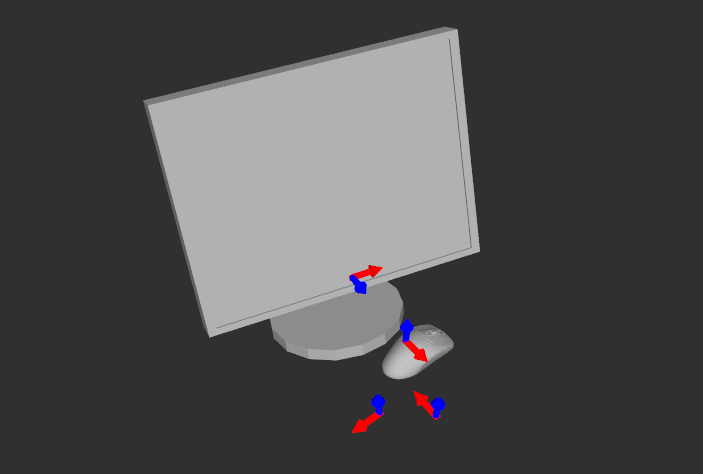Show EOL distros:
Package Summary
This package contains a marker recognition system using the ArUco library. It can be used with a mono or stereo camera system but yields better results with the latter.
- Maintainer: Meißner Pascal <asr-ros AT lists.kit DOT edu>
- Author: Allgeyer Tobias, Meißner Pascal, Qattan Mohamad
- License: BSD
- Source: git https://github.com/asr-ros/asr_aruco_marker_recognition.git (branch: master)
Package Summary
This package contains a marker recognition system using the ArUco library. It can be used with a mono or stereo camera system but yields better results with the latter.
- Maintainer: Meißner Pascal <asr-ros AT lists.kit DOT edu>
- Author: Allgeyer Tobias, Meißner Pascal, Qattan Mohamad
- License: BSD
- Source: git https://github.com/asr-ros/asr_aruco_marker_recognition.git (branch: master)
Package Summary
This package contains a marker recognition system using the ArUco library. It can be used with a mono or stereo camera system but yields better results with the latter.
- Maintainer: Meißner Pascal <asr-ros AT lists.kit DOT edu>
- Author: Allgeyer Tobias, Meißner Pascal, Qattan Mohamad
- License: BSD
- Source: git https://github.com/asr-ros/asr_aruco_marker_recognition.git (branch: master)
Contents
Description
This package contains a recognition system for square, binary 2D-markers using either a mono or a stereo camera setup.
Examples of used (printed) markers: 
Close-up of a marker with its orientation: 
Functionality
Overview
The objects are detected in the image(s) using the ArUco-library. Depending on the used camera system (mono or stereo), the found markers are further processed. If a mono system is used, the found poses of the ArUco-library are published, if on the other hand a stereo system is used, the final marker pose is calculated based on the positions of the markers in the left and right image: If a marker with the same id was found in each of them, the 3D corner points are calculated using triangulation of the 2D corner points in each image. The final pose is then calculated using ICP and then published.
Marker images can be created by using the marker creator tool this package contains. They need to be printed and then they can be attached to corresponding objects in the scene. This correspondance can be specified by adding mesh-models to the asr_object_database and naming the object depending on the used marker id (compare already created objects in the database for more information).
Example
In this example 4 markers are in the scene, two of which have a corresponding object stored in the asr_object_database (monitor and mouse). The markers each have the size of 1.5x1.5mm and the used cameras have a resolution of 1292x964.
Camera image of the stereo setup: 
Resulting rviz-visualization of the found markers: 
Resulting 3D-rviz-visualization of the found markers (as two of the markers don't have a corresponding object only their marker orientation is shown): 
Usage
Needed packages
Needed hardware
A calibrated mono or stereo camera system.
Start system
Marker Recognition
Start the process with
roslaunch asr_aruco_marker_recognition aruco_marker_recognition.launch
To start the (paused) recognition call the following service:
rosservice call /asr_aruco_marker_recognition/get_recognizer
To pause the (running) recognition call:
rosservice call /asr_aruco_marker_recognition/release_recognizer
Marker Creator
First edit the parameters for the marker creator as you need them to be (see configuration) and then start the process with
roslaunch asr_aruco_marker_recognition marker_creator.launch
The created marker images can be found in the directory specified in the configuration-yaml-file.
ROS Nodes
Subscribed Topics
The image and camera information of the left camera (or the camera in a mono setup):
sensor_msgs/Image (default: /stereo/left/image_color)
sensor_msgs/CameraInfo (default: /stereo/left/camera_info)
The topic names can be set in a .yaml file (see configuration). If a stereo setup is used, the topics above need to be available for both, the left and the right camera (by default the topic names are the same with right instead of left)
Published Topics
sensor_msgs/Image: A visualization of the found markers in the left image (default: markers_left)
sensor_msgs/Image: A visualization of the found markers in the right image (default: markers_right)
visualization_msgs/Marker: A visualization of the objects corresponding to the found markers (stored in the asr_object_database) (default: /stereo/visualization_marker)
asr_msgs/AsrObject: A message containing information about the found markers and their corresponding objects (name, pose etc.) (default: /stereo/objects)
As the subscribed topics, the output topics can be defined in a .yaml file.
Parameters
The following parameters can be changed in the aruco_marker_recognition_params.yaml file in the param folder:
use_stereo: If this is true a stereo camera system is used for the recognition, in that case the topics for the left and right camera have to be set (if this is false the topics of the left camera are used for the recognition)
image_left_topic: The topic of the left camera image
image_right_topic: The topic of the right camera image (only used if use_stereo is true)
image_left_cam_info_topic: The topic of the left camera's parameters
image_right_cam_info_topic: The topic of the right camera's parameters (only used if use_stereo is true)
vis_markers_topic: The topic name of the visualization markers used in rviz
left_markers_img_topic: The topic name of the overlay image of the left camera
right_markers_img_topic: The topic name of the overlay image of the right camera (only used if use_stereo ist true)
asr_objects_topic: The name of the topic the AsrObject-messages are published on
marker_size: The size of the used markers in meters
recognizer_name: The name of this recognizer specified in asr_object_database
The marker creator has the following parameters specified in marker_creator_params.yaml in the param folder:
marker_ids: A list containing the ids of the markers images are created for (valid ids: 0 - 1023)
output_rel_path: The path of the directory the marker images are saved to (relative to the package root)
marker_pixel_size: The size of the output markers in pixels
Needed Services
This package calls a service provided by the asr_object_database to get information about the objects corresponding to the used markers:
/asr_object_database/object_meta_data
Provided Services
get_recognizer: Starts the recognition if it is currently paused
- Parameter: -
- Returns: -
release_recognizer: Pauses the recognition if it is currently running.
- Parameter: -
- Returns: -
